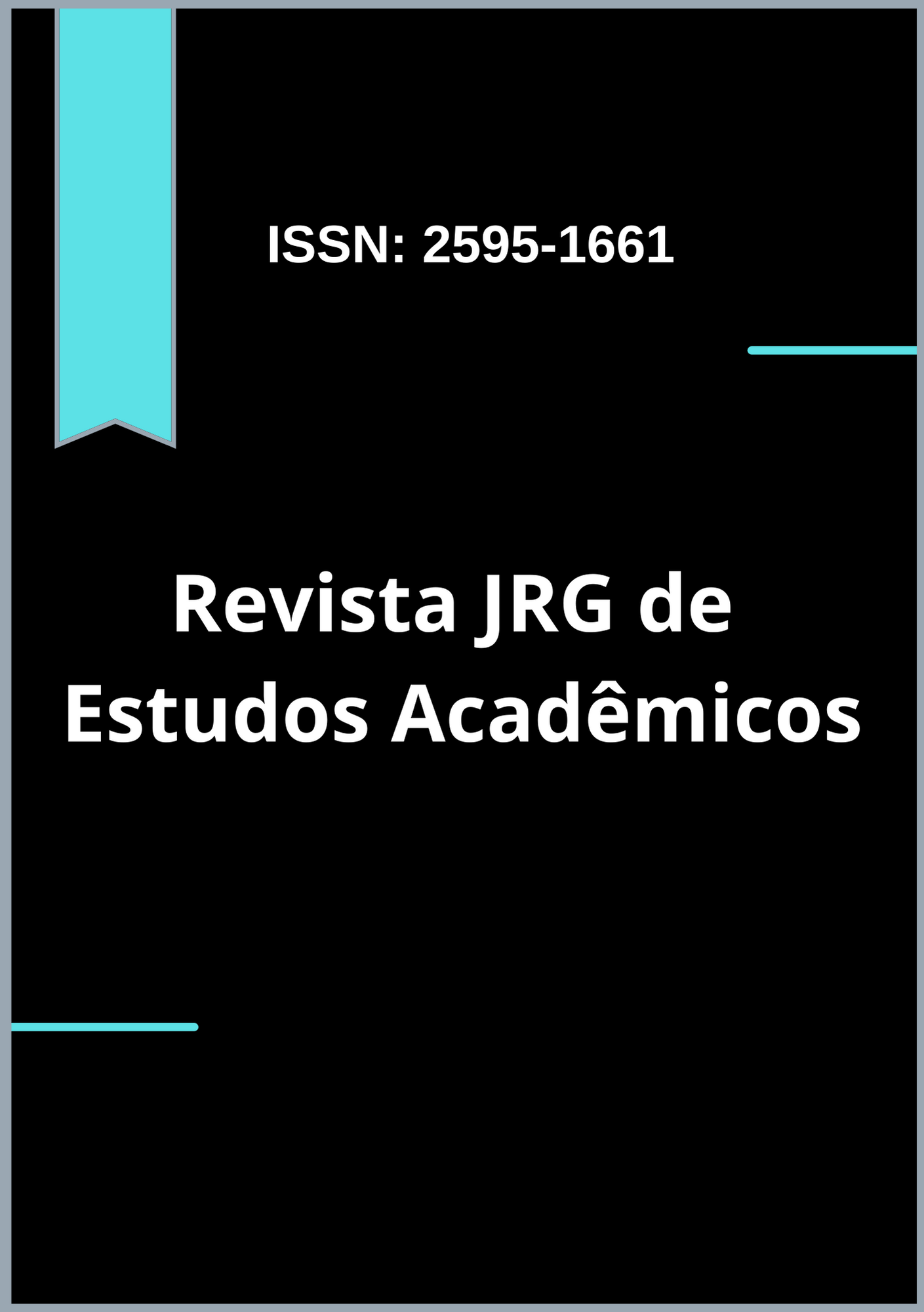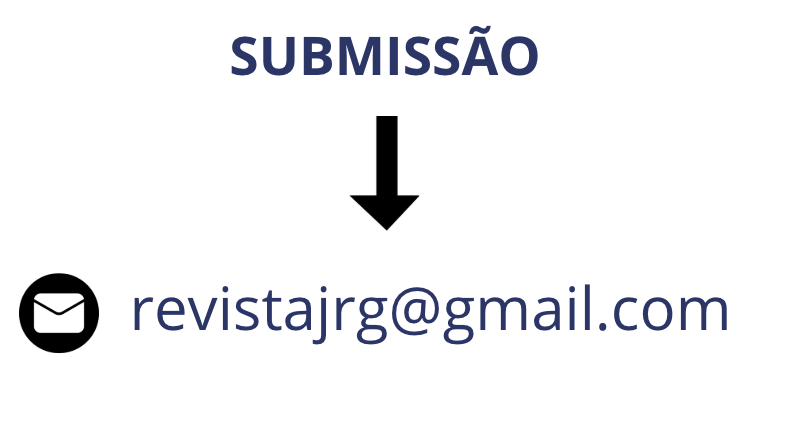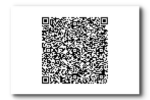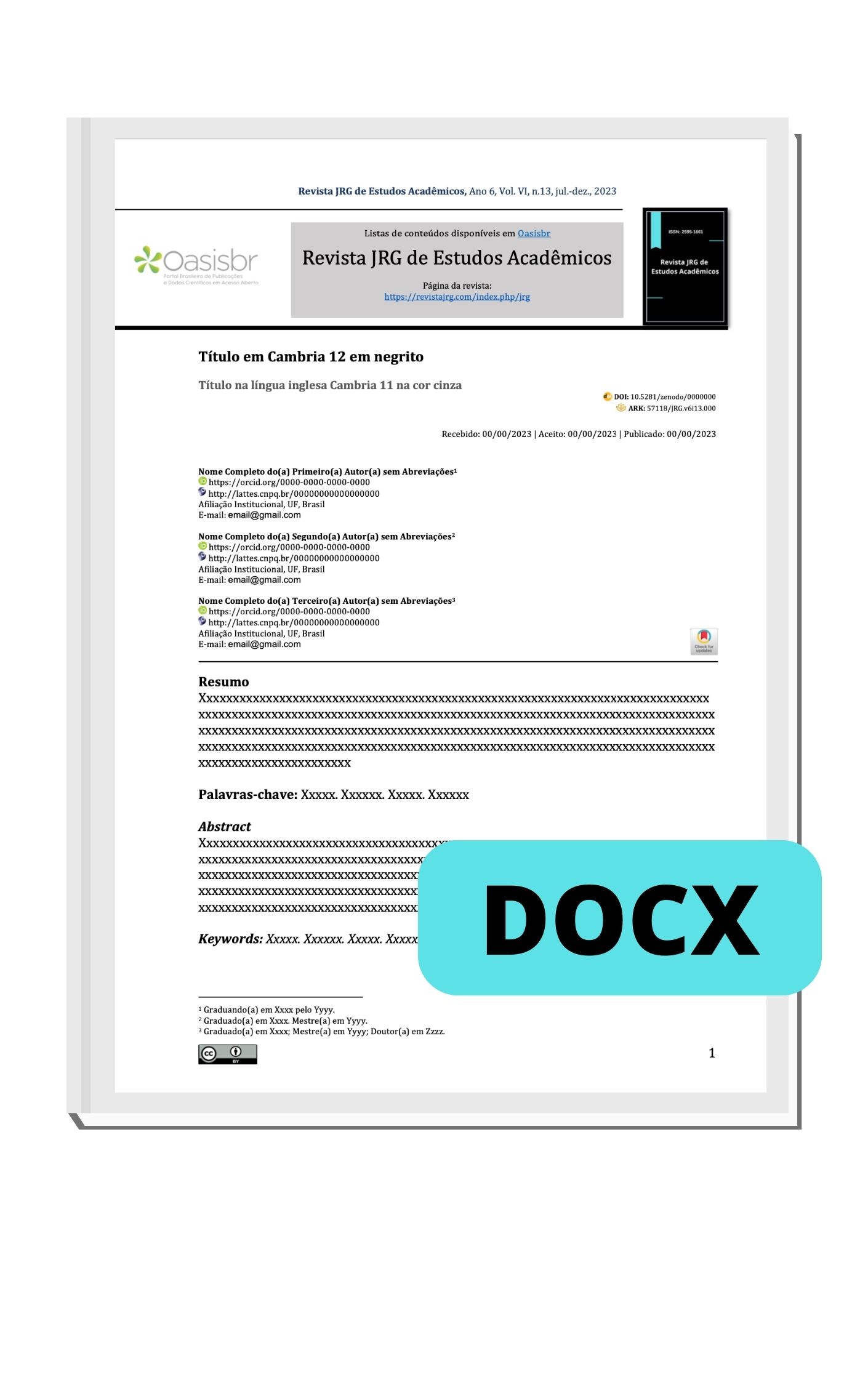Cyberstalking Moral Disengagement Scale (CMDS): Parâmetros Psicométricos no Brasil
DOI:
https://doi.org/10.55892/jrg.v8i18.2072Palavras-chave:
Desengajamento moral, Cyberstalking, Validade, PrecisãoResumo
A presente pesquisa objetivou adaptar a Moral Disengagement Scale (CMDS) para o contexto brasileiro, reunindo evidências de validade e precisão. Contou-se com 217 pessoas de diferentes regiões brasileiras (Midade = 27,89). A maioria era do Piauí (37,3%) e Paraíba (24,1%), mulheres (57,9%), que estavam namorando (38,2%) ou eram casados (28,6%). Foram aplicados o Cyberstalking Moral Disengagement Scale (CMDS) e questões sociodemográficas. Os resultados, por meio do índice de Kaiser-Meyer-Olkin (KMO) = 0,72 e o Teste de Esfericidade de Bartlett x2x2 (10) = 164,354; p < 0,001, possibilitaram realizar uma Análise Fatorial Exploratória (AFE), que sugeriu uma estrutura unifatorial da CMDS, com valor próprio de 2,19, que explicou 43,97% da variância total. O índice de consistência interna, medido pelos coeficientes alfa de Cronbach (α) e ômega do McDonald's (ω) apresentaram valores de 0,66, que é considerável aceitável para fins de pesquisa. Pelo exposto, conclui-se que a CMDS é uma medida com parâmetros psicométricos adequados, sendo um instrumento curto e unidimensional. Ademais, o instrumento ser utilizado em diferentes pesquisas, que possibilitem entender os mecanismos associados ao desengajamento moral.
Downloads
Referências
AHLGRIM, B.; TERRANCE, C. Perceptions of cyberstalking: Impact of perpetrator gender and cyberstalker/victim relationship. Journal of interpersonal violence, v. 36, n. 7-8, p. NP4074-NP4093, 2021. Disponível em: https://doi.org/10.1177/0886260518784590. Acesso em: 02 maio 2025.
BEGOTTI, T.; GHIGO, M. A.; MARAN, D. A. Victims of known and unknown cyberstalkers: A questionnaire survey in an Italian sample. International journal of environmental research and public health, v. 19, n. 8, p. 4883, 2022. Disponível em: https://doi.org/10.3390/ijerph19084883. Acesso em: 02 maio 2025.
BANDURA, A. et al. Mechanisms of moral disengagement in the exercise of moral agency. Journal of personality and social psychology, v. 71, n. 2, p. 364, 1996. Disponível em: https://psycnet.apa.org/buy/1996-06400-013. Acesso em: 02 maio 2025.
BANDURA, A. Selective moral disengagement in the exercise of moral agency. Journal of moral education, v. 31, n. 2, p. 101-119, 2002. Disponível em; https://doi.org/10.1080/0305724022014322. Acesso em: 02 maio 2025.
BLÖTNER, C. et al. The nomological network of the Short Dark Tetrad scale (SD4). European Journal of Psychological Assessment, 2021. Disponível em: https://doi.org/10.1027/1015-5759/a000655. Acesso em: 02 maio 2025.
DAMÁSIO, B. F.; DUTRA, D. F.; BAPTISTA, M. N. Análise fatorial exploratória (AFE) e teoria de resposta ao item via sofware factor. In: Faiad, C.; Batista, M. N.; Primi, R. (Orgs.). Tutoriais em análise de dados aplicada à psicometria. Porto Alegre: Vozes, 2021.
FISSEL, E. R. The reporting and help-seeking behaviors of cyberstalking victims. Journal of interpersonal violence, [S. I.], v. 36, n. 11-12, p. 5075-5100, 2021. DOI: https://doi.org/10.1177/0886260518801942. Disponível em: <https://journals.sagepub.com/do-i/10.1177/0886260518801942>. Acesso em: 02 set. 2023.
GHOLAMI, M. et al. From Dark Triad Personality Traits to Digital Harm: Mediating Cyberbullying Through Online Moral Disengagement. Deviant Behavior, p. 1-19, 2025. Disponível em: https://doi.org/10.1080/01639625.2025.2453445. Acesso em: 02 maio 2025.
HAIR, J. F.; SARSTEDT, M.; RINGLE, C. Rethinking some of the rethinking of partial least squares. European journal of marketing, [S. I.], v. 53, n. 4, p. 566-584, Apr. 2019. DOI: https://doi.org/10.1108/EJM-10-2018-0665. Disponível em: <https://www.emerald.com/insigh-t/content/doi/10.1108/EJM-10-2018-0665/full/html>. Acesso em: 02 set. 2023.
HAIR, J. F. et al. Primer on Partial Leal Squares Structural Equation Modeling (PLS-SEM). 3. Ed. Los Angeles: 2022. Acesso em: 02 set. 2023.
LI, H.; GUO, Q.; HU, P. Moral disengagement, self-control and callous-unemotional traits as predictors of cyberbullying: a moderated mediation model. BMC psychology, [S. I.], v. 11, n. 1, p. 1-11, 2023. DOI: https://doi.org/10.1186/s40359-023-01287-z. Disponível em: <https://bmc-psychology.biomedcentral.com/articles/10.1186/s40359-023-01287-z. Acesso em: 02 set. 2023.
MAFTEI, A.; BOSTAN, C.; ZAHARIA, D. Hostility and civic moral disengagement: Cognitive reappraisal and expressive suppression as moderators. Journal of Moral Education, [S. I.], v. 50, n. 2, p. 202-218, 2019. Disponível em: https://doi.org/10.1080/03057240.2019.1691512. Acesso em: 02 set. 2023.
MARCH, E. et al. Passive, invasive, and duplicitous: Three forms of intimate partner cyberstalking. Personality and individual differences, [S. I.], v. 189, p. 111502, Apr. 2022. DOI: https://doi.org/10.1016/j.paid.2022.111502. Disponível em: <https://www.sciencedirect.com/sci-ence/article/abs/pii/S0191886922000058>. Acesso em: 02 set. 2023.
NOCERA, T. R. et al. Dark personality traits and anger in cyber aggression perpetration: Is moral disengagement to blame?. Psychology of Popular Media, v. 11, n. 1, p. 24, 2022. Disponível em: https://psycnet.apa.org/doi/10.1037/ppm0000295. Acesso em: 02 maio 2025.
PACIELLO, M. et al. The role of traditional and online moral disengagement on cyberbullying: Do externalising problems make any difference?. Computers in Human Behavior, v. 103, p. 190-198, 2020. Disponível em: https://doi.org/10.1016/j.chb.2019.09.024. Acesso: 02 maio 2025.
PASQUALI, L. TEP – Técnicas de exame psicológico: os fundamentos. 2. ed. São Paulo: Vetor editora, 2016. Acesso em: 02 maio 2025
SANTOS, W. S. dos; ARAÚJO, R. de C. R. Propriedades psicométricas. In: GORENSTEIN, C.; WANG, Y. (Orgs.). Instrumentos de avaliação em saúde mental. Porto Alegre: Artmed, 2024.
SILVA, P. G. N. et al. Intimate Partner Cyberstalking Scale (IPCS): evidências psicométricas no Brasil. Revista Iberoamericana de Diagnóstico y Evaluación-e Avaliação Psicológica, [S. I.], v. 2, n. 59, p. 5-17, 2021. Disponível em: http://dx.doi.org/10.21865/RIDEP59.2.01 Acesso em: 02 set. 2023.
SMOKER, M.; MARCH, E. Predicting perpetration of intimate partner cyberstalking: Gender and the Dark Tetrad. Computers in Human Behavior, [S. I.], v. 72, p. 390-396, July 2017. Disponível em: https://doi.org/10.1016/j.chb.2017.03.012. Acesso em: 02 set. 2023.
WILSON, C.; SHERIDAN, L.; GARRATT-REED, D. What is cyberstalking? A review of measurements. Journal of interpersonal violence, v. 37, n. 11-12, p. NP9763-NP9783, 2022. Disponível em: https://doi.org/10.1177/0886260520985489. Acesso em: 02 maio 2025.
ZHAO, L.; YU, J. A meta-analytic review of moral disengagement and cyberbullying. Frontiers in Psychology, [S. I.], v. 12, p. 681299, 2021. Disponível em: https://doi.org/10.3389/fpsyg.2021.681299. Acesso em: 02 maio 2025.
Downloads
Publicado
Como Citar
Edição
Seção
ARK
Licença

Este trabalho está licenciado sob uma licença Creative Commons Attribution 4.0 International License.










































